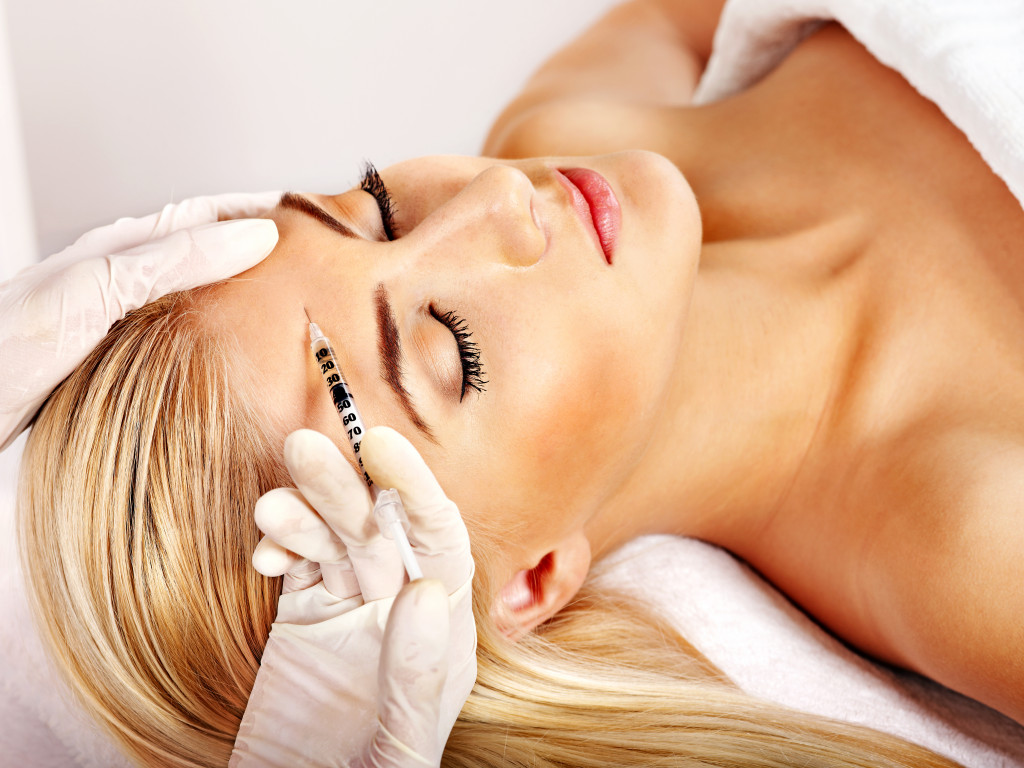- Chemical peels are used to soften and remove damaged skin, encouraging the growth of new, healthy skin.
- Laser resurfacing heats up and removes the top layer of skin, stimulating collagen production.
- Microdermabrasion exfoliates the surface layers of skin cells and stimulates collagen production.
- Dermal fillers use injectables to fill in any depressions or indentations left by acne scars.
- Dermaplanning uses a blade to scrape dirt and debris, reducing scarred areas gently.
Acne is one of the most common skin conditions, and it can leave a long-lasting impact in the form of scars. The most common type of acne scar is a depressed or pitted scar, followed by hypertrophic or raised scars. While you cannot completely eliminate these types of acne scars, there are ways to reduce their appearance. This article will look at five effective methods to help eliminate and reduce any existing acne scars you may have.
1. Chemical Peels
Chemical peels are a great way to eliminate any existing acne scars on your face and body. This procedure involves the application of an acid solution on the affected area that helps soften and remove the top layer of damaged skin. This encourages the growth of new, healthy skin that can help reduce the appearance of acne scars.
2. Laser Resurfacing
Laser resurfacing is another popular procedure for eliminating and reducing acne scars. It involves using a laser beam to heat up and remove the top layer of damaged skin. This technique can also stimulate collagen production in the deeper layers of your skin to help fill any depression left behind by an acne scar.
3. Microdermabrasion

Microdermabrasion is a non-invasive procedure that uses tiny crystals to exfoliate the surface layer of your skin cells, which helps get rid of dead and damaged cells responsible for acne scars. During this procedure, a device is used to gently exfoliate the top layer of your skin and stimulate collagen production.
4. Dermal Fillers
Dermal fillers are also an option for acne scar treatment. This method utilizes injectables such as hyaluronic acid or collagen to fill in any depressions or indentations left behind by acne scars. This can help make them less visible and softens their appearance. The effects of dermal fillers can last up to one year, though they may require touch-ups. It’s important to note that the results of a filler treatment can vary depending on the person and their facial anatomy.
5. Dermaplanning
Dermaplanning is a method of exfoliation that helps get rid of dead skin cells and stimulate collagen production. This procedure requires the use of a specialized blade to gently scrape away any build-up of dirt and debris on your skin, which smooths out the texture and reduces scarred areas. When you get a non-invasive dermaplaning facial for your acne scars, you can expect to see a reduction in the overall appearance of scarring. The procedure also helps improve skin tone by removing accumulated dead skin cells.
Commonly Asked Questions
What types of laser treatments are available for reducing acne scars?

The types of laser treatments available for reducing acne scars depending on the type and severity of the scarring. Fractional laser resurfacing, which targets affected areas to stimulate collagen production, is a standard treatment for reducing deeper acne scars. Other options include non-ablative lasers, which can help to lighten some of the discoloration caused by acne scars, and intense pulsed light treatments to help reduce inflammation and redness.
Does skin need to be prepped before a chemical peel treatment?
Yes, it is essential to properly prep the skin before having a chemical peel treatment. This includes cleansing and exfoliating the area to remove any dirt and debris that could interfere with the effectiveness of the treatment. You should also avoid using harsh products or treatments in the weeks following your appointment to ensure optimal results.
Are there any home remedies for reducing acne scarring?
Yes, some home remedies may help reduce acne scarring over time. Exfoliating to remove dead skin cells and keep pores unclogged is one effective way to improve texture and reduce inflammation. Additionally, topical treatments such as tea tree oil or aloe vera gel may also help lighten discoloration associated with acne.
How quickly can I expect to see results from cosmetic treatments for acne scarring?
The speed at which you will experience results depends on the type of treatment chosen and the severity of your scarring. In general, laser treatments may provide more immediate results, while dermabrasion or chemical peels may take several weeks before optimal outcomes are achieved.
Final Words
These are just some of the most common cosmetic treatments available for reducing or eliminating acne scars. To determine which treatment will be most effective for you, you should consult a dermatologist or other qualified medical professional who can assess your individual needs. With the right approach, you can achieve smoother skin and reduce the appearance of any existing scars.






